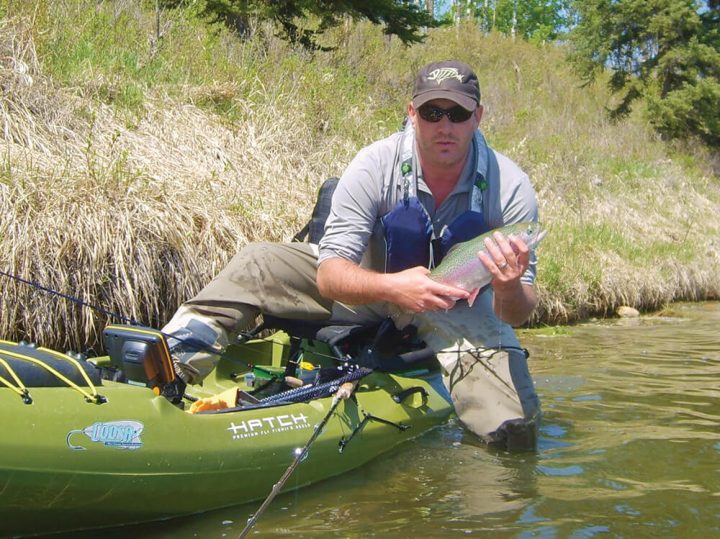By TAM Staff:
Without a doubt, Alberta, Canada’s Bow River is a world-class trout fishery. Glacier-fed and flowing more than 350 miles from the Canadian Rockies through the foothills and prairies of Alberta, it is big and scenic by the time it reaches the 50-mile section southeast of Calgary that author Jim McLennan called “the Blue Ribbon Bow.” It is here in this blue ribbon stretch that anglers flock to get in on some of the best brown and rainbow trout fishing in the world.
Stephen Laurie considers the Bow his home water. Although most guide operations fish the river from drift boats or rafts, he prefers fishing it from a kayak most of the time. He said it’s a good way to access smaller runs that larger, less maneuverable vessels can’t reach. Some of his best days of fishing have occurred in back channels that don’t receive much fishing pressure.
When speaking of good days on the Bow, one must consider that the river holds 2,500 rainbow and brown trout per mile. Laurie said fish average about 15 or 16 inches, and that large fish longer than 20 inches eat lures and streamers daily. He has a fondness for what he called “Bow River bullets,” which are big rainbow trout renowned for their fight. He said visiting anglers are often surprised by how hard these big-shouldered rainbows pull.
Early spring to late fall offers a long window when the Bow fishes well. Either end of that time frame can present huge snow banks and bitterly cold temperatures, though. The best fishing can be found following the subsidence of the spring runoff in May and early June. Trout remain hungry and susceptible to a variety of tactics through the summer months.
Laurie said fly anglers should bring boxes loaded with streamers like Clouser Minnows, Rubber Buggers, and Crystal Zonkers. Nymphs are also very productive, and patterns like Hare’s Ears, Rainbow Warriors, Frenchies and worms are a necessity. And it is definitely worthwhile to stop in at a local fly shop to ask about what hatches might be coming off. The dry fly fishing can be spectacular during heavy caddis or mayfly hatches.
“I have always taken a spinning rod when on the river, as the winds can pick up anytime and cause some real fly casting issues, especially when fishing from a kayak,” Laurie said. “Having a spinning rod with me has saved a few wind-filled days. Most common lures would be Rapala CD7 and typical spinners in varying colors.”
Although it is possible to access stretches of the Bow to wade, float trips are by far a better option because access points are spread out. A floating angler could bite off between three and eight hours worth of fishing or even an overnight trip depending on the put-in and takeout points and how long is spent stopping to wade fish the more productive stretches.
With summer vacations coming up, now is the time to start planning a trout excursion to the Blue Ribbon Bow to experience some of the best fishing on the planet.
